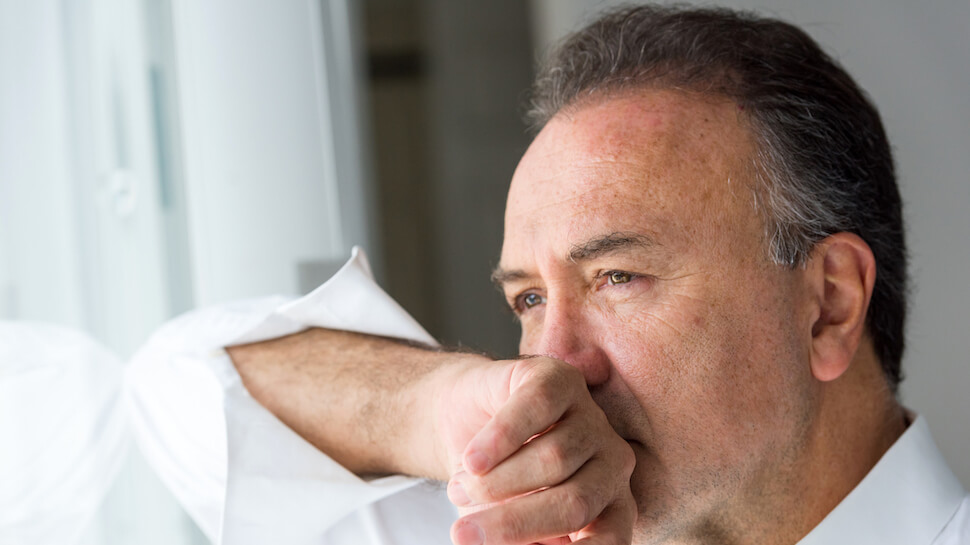
Obsessive-Compulsive Disorder
Obsessive-compulsive disorder (OCD) is a mental health condition that causes a person to have obsessive thoughts and urges that are negative, unwanted, and persistent. Those obsessions in turn cause compulsive behaviors, repetitive behaviors a person engages in to reduce anxiety or make the obsessive thoughts go away. OCD can be successfully managed with psychotherapy and in some cases with medication as well.
Obsessive-Compulsive Disorder Defined
Once considered a type of anxiety disorder, obsessive compulsive disorder (OCD) now heads a new category of related psychiatric disorders. These are conditions that are related to obsessions and compulsions, including hoarding disorder and body dysmorphic disorder.
OCD is a condition that causes obsessions, compulsions, or both. Most people with OCD have obsessive thoughts or images, often negative that persist and are unwanted, causing distress. They also have compulsions, behaviors that a person engages in repeatedly, either to relieve the distress or to prevent something bad from happening.
This can be viewed as a negative cycle of thoughts and behaviors. A person with OCD is troubled by thoughts, urges, and images they cannot get out of their minds. To self-soothe or to prevent any of these negative thoughts from becoming a reality, they engage in some type of compulsive behavior. This behavior provides some temporary relief, but soon the obsessions return and the cycle starts again.
Facts about OCD
- Approximately one percent of the U.S. adult population struggles with OCD, which amounts to 2.2 million people.
- Just more than half of these adults suffer from severe OCD.
- The lifetime prevalence of OCD is highest in people between the ages of 30 and 44.
- The average age of onset of OCD is 19. One quarter of cases are diagnosed by the age of 14.
- Nearly one third of adults diagnosed with OCD experienced at least some symptoms during childhood.
The Symptoms of OCD
There are two characteristic symptoms of obsessive-compulsive disorder: the obsessions and the compulsions. A person with OCD may experience just one of these or both. The obsessions are urges, images or thoughts that cause anxiety and distress. The compulsions are behaviors used to soothe anxiety and prevent negative thoughts from really happening. They are typically excessive and repetitive. Some examples of common obsessions experienced by someone with OCD are:
- A strong, irrational fear of germs or of being contaminated
- Unwanted thoughts that may be considered taboo, including sexual or violent imagery
- A fear of saying or doing something inappropriate
- Images and thoughts of something bad happening to loved ones or to oneself
- Fear of having forgotten to do something important, like turn off the stove or lock the door
- A need to have objects and possessions ordered or aligned in a specific way
- An extreme focus on religious or moral ideals
- Superstitions, like lucky or unlucky objects
- A fear of losing something or someone
The compulsions are soothing behaviors and are often related to the obsessions, but also may be completely unrelated. Some common examples of compulsive behaviors are:
- Excessive hand washing. This is an example of a compulsion that may match the obsession, a fear of germs.
- Tapping or touching objects, repeating words or phrases, or counting things. These are examples of compulsions that are typically not related to the obsessions, but are more random and intended to soothe or prevent something bad from happening.
- Excessively double-checking things like light switches and door locks
- Spending a lot of time arranging objects in a particular way
- Checking on loved ones for safety, repeatedly and to excess
- Excessive praying or other religious rituals
- Asking for constant reassurance from others
It is important to remember that ritual-type behaviors are not necessarily compulsions. They have crossed the line to compulsive behaviors when they are excessive, take up an hour or more a day, relieve anxiety but don’t necessarily cause pleasure, cause significant impairments in a person’s life, and when a person cannot control them or stop doing them.
Call for a Free Confidential Assessment.
877-727-4343Risk Factors and Causes
As with most mental health conditions, there is no known cause of OCD, but there are risk factors. These are factors that increase the risk a person will experience OCD symptoms and be diagnosed. Risk factors include genetics and family history. A person’s risk is increased if a parent or sibling has OCD, especially if that relative developed OCD as a child.
Environmental factors can also increase the risk of developing OCD. Trauma, such as childhood physical or sexual abuse, is a risk factor for OCD. A streptococcal infection in a child may be connected to OCD. The infection can sometimes lead to OCD-like symptoms. This phenomenon is called pediatric autoimmune neuropsychiatric disorders associated with streptococcal infections, or PANDAS.
Brain imaging studies have found that people with OCD have altered structures in the subcortical and frontal cortex regions of the brain. Whether this is a cause or an effect is not known, but changes in the brain may play a role in the development of OCD.
Diagnostic Criteria for OCD
Obsessive-compulsive disorder can be successfully treated and managed, but it must be diagnosed first by a mental health professional. The diagnostic criteria from the most recent edition of the Diagnostic and Statistical Manual of Mental Disorders (DSM-5) include the presence of obsessions or compulsions, or both. Previously, it was also required that a person be aware that their obsessions were irrational. Now that is not required, so someone with OCD may believe their obsessive thoughts are real.
The DSM defines obsessions as impulses or thoughts that are repeated, unwanted, and that cause distress. The person experiencing them tries to ignore them or make them disappear. Compulsions are defined as repeated behaviors performed in a specific way to make the obsessions go away, to prevent negative outcomes, or to relieve stress. The behaviors are either extreme or not at all connected to reality.
To be diagnosed with OCD a person must experience both or one of the above symptoms. However, there are other criteria:
- The obsessions and/or compulsions must take up significant time, more than an hour a day, cause distress, or cause significant impairment in a person’s life.
- The symptoms must not be related to another mental health condition.
- The symptoms must not be caused by substance abuse.
Treating OCD
OCD can be treated with psychotherapy, medication, or a combination of both. This condition cannot be cured, but medications can help a person struggling with obsessive thoughts relax, and therapy can help a patient learn to manage and control those thoughts and resulting compulsions. Someone with OCD may need ongoing treatment over the long term to manage symptoms.
Therapy is an important component of treatment, and while more general styles of therapy, like cognitive behavioral therapy (CBT), can be effective, there is also a treatment specifically developed for OCD.
Medications used to treat OCD are typically antidepressants. There are a few specific antidepressants that are approved for treating OCD, but used alone without therapy these are typically of limited help in managing symptoms:
- Sertraline/Zoloft
- Fluoxetine/Prozac
- Paroxetine/Paxil
- Clomipramine/Anafranil
- Fluvoxamine
Only Paxil is not approved for use in children. All antidepressants carry risks and the possibility of side effects. It is important for patients to talk to their doctors about side effects so that a different drug can be used if needed. It is also important to not stop using an antidepressant without a doctor’s guidance. Stopping use can lead to withdrawal.
Why Consider Bridges to Recovery?
At Bridges to Recovery, we specialize in diagnosing and treating complex psychiatric and emotional issues such as obsessive-compulsive disorder. We provide compassionate and effective care in a serene residential setting so clients can focus on their ocd treatment and recovery without the worries of external pressures and stressors.
- Private residential accommodations. Our exclusive residential treatment homes have a maximum of six clients, providing a safe, private alternative to a more traditional hospital environment.
- World-class clinical staff. Our expert clinical team provides individual therapy using proven evidence-based treatment modalities to treat OCD.
- Individualized treatment plans. After a thorough assessment, we create a truly individualized treatment plan that offers profound healing and strategies for overcoming the toughest obstacles.
- Health and wellness focused. To ensure your comfort during your healing process, our chefs create delicious healthy, gourmet meals. We also offer yoga, meditation, acupuncture, massage, and physical fitness classes.
At Bridges to Recovery, we believe that exceptional psychiatric, clinical, and holistic care can transform lives. With the utmost dignity and respect, we meet you where you are to develop a vision for the life you wish to have, and offer the care you need to achieve it.





